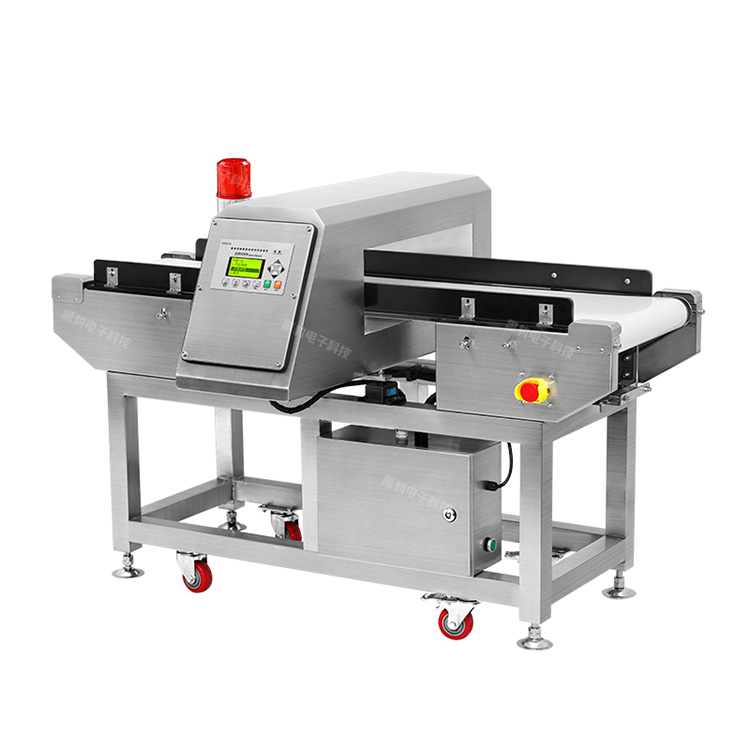
one. Scope of Application:
Food metal detector is mainly used for: Sauces, sausages, dumplings, ham, soup, confectionery, preserved food, salted food, fast food, food additives, starch, glucose, tobacco, fresh meat, dairy products and other industries, suitable for product detection with strong product effect and other industries with high detection sensitivity, anti-interference ability and waterproof requirements. Used to detect broken needles, iron wires or lead, copper, aluminum, tin, stainless steel and other metals included or lost in food, raw materials or products.
Food metal detector can also be used for meat, fungi, candy, beverages, food, fruits and vegetables, dairy products, aquatic products, health products, additives and condiments and other food iron metal and non-iron metal impurity detection.
Two. Performance Characteristics:1. Balanced principle, more stable and reliable, better performance;
2. Phase regulation technology, can adjust the product, effectively inhibit the product effect;
3. The combination of DSP and MCU for data sampling and data processing of the detection signal improves the detection effect;
4. The direct digital frequency generator can adjust the frequency, phase and amplitude of the sine wave, which changes the analog circuit parameters are difficult to adjust and match, and can easily adjust various parameters such as sensitivity;
5. LCD panel, Chinese and English operation menu, users can choose according to needs, with a good human-machine dialogue interface;
6. With one-click product features self-learning function, intelligent automatic learning and memory product features, no need to manually adjust parameters, simple operation;
7. With 100 kinds of product parameter memory function, can store 100 kinds of product detection parameters, no need to adjust once set, can be called when testing products;
8. Automatic removal of defective products, saving labor costs, improve production efficiency.
Sensitivity depends on two factors: aperture size and operating frequency. The smaller the aperture, the higher the sensitivity of the probe. For example, a hole with a height of 50mm will only be able to detect 0.5mm of metal. Second, the higher the frequency, the higher the sensitivity. However, increasing the frequency does not automatically mean increased detection capability, as it can cause the food itself to produce a strong signal to the detector, which is often referred to as the product effect. Therefore, our goal is to determine a maximum frequency at which failure does not seem to occur. In this way, the detector can detect contaminants and does not send false alarms.
In order to obtain the best results, the specific test parameters for each product to be tested should be determined and automatically recorded and retained. The industry standard it uses to test the performance of metal detectors is the size of the various metal spheres detected by the detector. But in fact, the contaminant may be in the form of metal wires or fragments on metal plates. They produce different signals to the detector based on their position in the detector aperture, known as the azimuth effect.
About Us
Company ProfileCompany imageApplicationHonorProduct
Food metal detector Aluminum foil metal detector Metal separatorOnline weighing machine Online weight sorting machineNews Center
Company news Industry information Common problem+86-15024095990Working day 8:30-20:00
(Welcome to inquire)
We chat number

Mobile website

WeChat public account




Dongguan Heibao electronic technology co.,LTD © Copyright【粤ICP备16072073号 】 【GMAP】 【BMAP】 【Back to top】